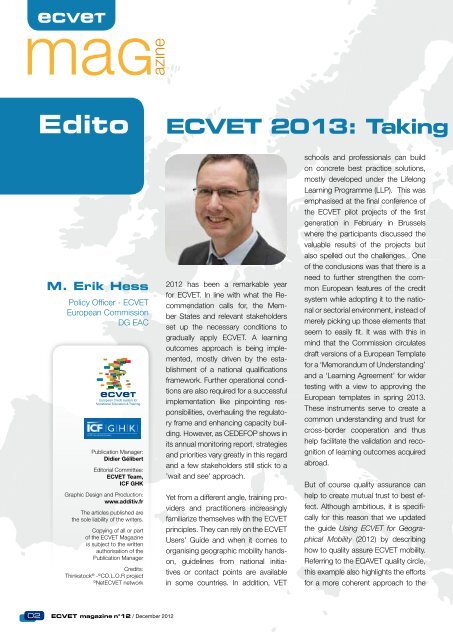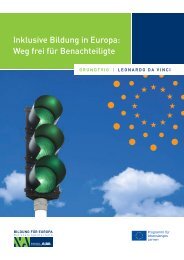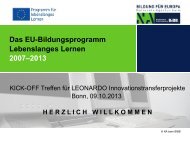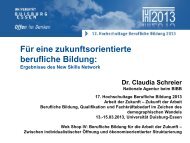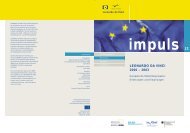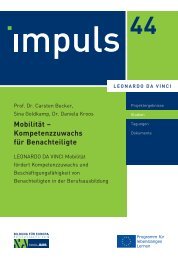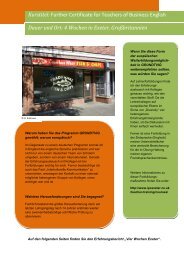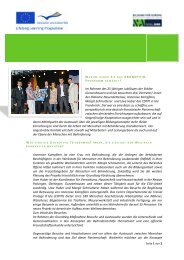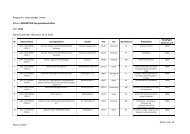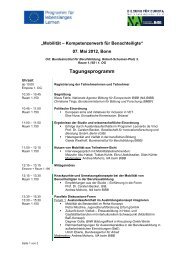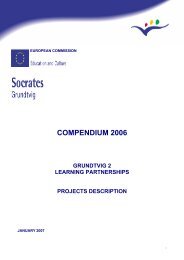Create successful ePaper yourself
Turn your PDF publications into a flip-book with our unique Google optimized e-Paper software.
Edito<br />
M. Erik Hess<br />
Policy Officer - ECVET<br />
European Commission<br />
DG EAC<br />
Publication Manager:<br />
Didier Gélibert<br />
Editorial Committee:<br />
ECVET Team,<br />
ICF GHK<br />
Graphic Design and Production:<br />
<strong>www</strong>.additiv.fr<br />
The articles published are<br />
the sole liability of the writers.<br />
Copying of all or part<br />
of the ECVET Magazine<br />
is subject to the written<br />
authorisation of the<br />
Publication Manager<br />
Credits:<br />
Thinkstock ® - © CO.L.O.R project<br />
© NetECVET network<br />
02 ECVET magazine n°12 / December 2012<br />
ECVET 2013: Taking<br />
2012 has been a remarkable year<br />
for ECVET. In line with what the Recommendation<br />
calls for, the Member<br />
States and relevant stakeholders<br />
set up the necessary conditions to<br />
gradually apply ECVET. A learning<br />
outcomes approach is being implemented,<br />
mostly driven by the establishment<br />
of a national qualifications<br />
framework. Further operational conditions<br />
are also required for a successful<br />
implementation like pinpointing responsibilities,<br />
overhauling the regulatory<br />
frame and enhancing capacity building.<br />
However, as CEDEFOP shows in<br />
its annual monitoring report, strategies<br />
and priorities vary greatly in this regard<br />
and a few stakeholders still stick to a<br />
'wait and see' approach.<br />
Yet from a different angle, training providers<br />
and practitioners increasingly<br />
familiarize themselves with the ECVET<br />
principles. They can rely on the ECVET<br />
Users' Guide and when it comes to<br />
organising geographic mobility handson,<br />
guidelines from national initiatives<br />
or contact points are available<br />
in some countries. In addition, VET<br />
schools and professionals can build<br />
on concrete best practice solutions,<br />
mostly developed under the Lifelong<br />
Learning Programme (LLP). This was<br />
emphasised at the final conference of<br />
the ECVET pilot projects of the first<br />
generation in February in Brussels<br />
where the participants discussed the<br />
valuable results of the projects but<br />
also spelled out the challenges. One<br />
of the conclusions was that there is a<br />
need to further strengthen the common<br />
European features of the credit<br />
system while adopting it to the national<br />
or sectorial environment, instead of<br />
merely picking up those elements that<br />
seem to easily fit. It was with this in<br />
mind that the Commission circulates<br />
draft versions of a European Template<br />
for a ‘Memorandum of Understanding’<br />
and a ‘Learning Agreement’ for wider<br />
testing with a view to approving the<br />
European templates in spring 2013.<br />
These instruments serve to create a<br />
common understanding and trust for<br />
cross-border cooperation and thus<br />
help facilitate the validation and recognition<br />
of learning outcomes acquired<br />
abroad.<br />
But of course quality assurance can<br />
help to create mutual trust to best effect.<br />
Although ambitious, it is specifically<br />
for this reason that we updated<br />
the guide Using ECVET for Geographical<br />
Mobility (2012) by describing<br />
how to quality assure ECVET mobility.<br />
Referring to the EQAVET quality circle,<br />
this example also highlights the efforts<br />
for a more coherent approach to the


